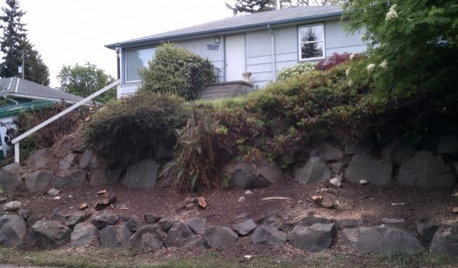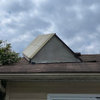!!!french drain question!!!
phantom_gardner
13 years ago
Related Stories

EXTERIORSCurb Appeal Feeling a Little Off? Some Questions to Consider
Color, scale, proportion, trim ... 14 things to think about if your exterior is bugging you
Full Story
DOORS5 Questions to Ask Before Installing a Barn Door
Find out whether that barn door you love is the right solution for your space
Full Story
REMODELING GUIDES13 Essential Questions to Ask Yourself Before Tackling a Renovation
No one knows you better than yourself, so to get the remodel you truly want, consider these questions first
Full Story
KITCHEN DESIGN9 Questions to Ask When Planning a Kitchen Pantry
Avoid blunders and get the storage space and layout you need by asking these questions before you begin
Full Story
REMODELING GUIDESConsidering a Fixer-Upper? 15 Questions to Ask First
Learn about the hidden costs and treasures of older homes to avoid budget surprises and accidentally tossing valuable features
Full Story
MOVINGHiring a Home Inspector? Ask These 10 Questions
How to make sure the pro who performs your home inspection is properly qualified and insured, so you can protect your big investment
Full Story
Design Dilemmas: 5 Questions for Design Stars
Share Your Design Know-How on the Houzz Questions Board
Full Story
FEEL-GOOD HOMEThe Question That Can Make You Love Your Home More
Change your relationship with your house for the better by focusing on the answer to something designers often ask
Full Story
ORGANIZINGPre-Storage Checklist: 10 Questions to Ask Yourself Before You Store
Wait, stop. Do you really need to keep that item you’re about to put into storage?
Full Story
ORGANIZING4 Questions to Help You Organize Your Favorite Photos
Organize your keeper photos with a system that's just right for you, whether it's in the cloud or you can hold it in your hand
Full StorySponsored
Your Industry Leading Flooring Refinishers & Installers in Columbus
More Discussions











User
phantom_gardnerOriginal Author
Related Professionals
Buffalo Grove Kitchen & Bathroom Remodelers · Kuna Kitchen & Bathroom Remodelers · Oxon Hill Kitchen & Bathroom Remodelers · Pinellas Park Kitchen & Bathroom Remodelers · DeRidder General Contractors · Irving General Contractors · Newington General Contractors · North Smithfield General Contractors · Midlothian Painters · Weston Painters · Brandon Painters · Libertyville Painters · San Anselmo Painters · St. Johns Painters · Town 'n' Country Paintersperel
User
bill_g_web